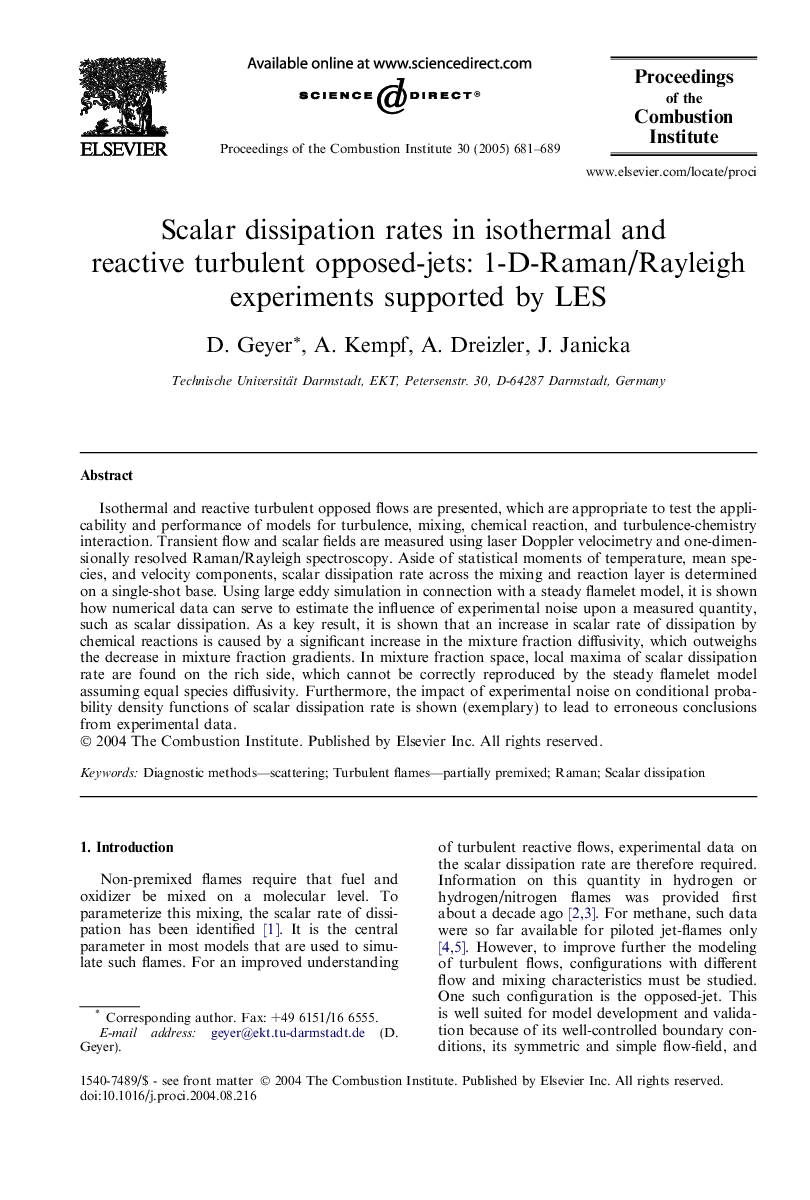| Article ID | Journal | Published Year | Pages | File Type |
|---|---|---|---|---|
| 9637391 | Proceedings of the Combustion Institute | 2005 | 9 Pages |
Abstract
Isothermal and reactive turbulent opposed flows are presented, which are appropriate to test the applicability and performance of models for turbulence, mixing, chemical reaction, and turbulence-chemistry interaction. Transient flow and scalar fields are measured using laser Doppler velocimetry and one-dimensionally resolved Raman/Rayleigh spectroscopy. Aside of statistical moments of temperature, mean species, and velocity components, scalar dissipation rate across the mixing and reaction layer is determined on a single-shot base. Using large eddy simulation in connection with a steady flamelet model, it is shown how numerical data can serve to estimate the influence of experimental noise upon a measured quantity, such as scalar dissipation. As a key result, it is shown that an increase in scalar rate of dissipation by chemical reactions is caused by a significant increase in the mixture fraction diffusivity, which outweighs the decrease in mixture fraction gradients. In mixture fraction space, local maxima of scalar dissipation rate are found on the rich side, which cannot be correctly reproduced by the steady flamelet model assuming equal species diffusivity. Furthermore, the impact of experimental noise on conditional probability density functions of scalar dissipation rate is shown (exemplary) to lead to erroneous conclusions from experimental data.
Keywords
Related Topics
Physical Sciences and Engineering
Chemical Engineering
Chemical Engineering (General)
Authors
D. Geyer, A. Kempf, A. Dreizler, J. Janicka,
